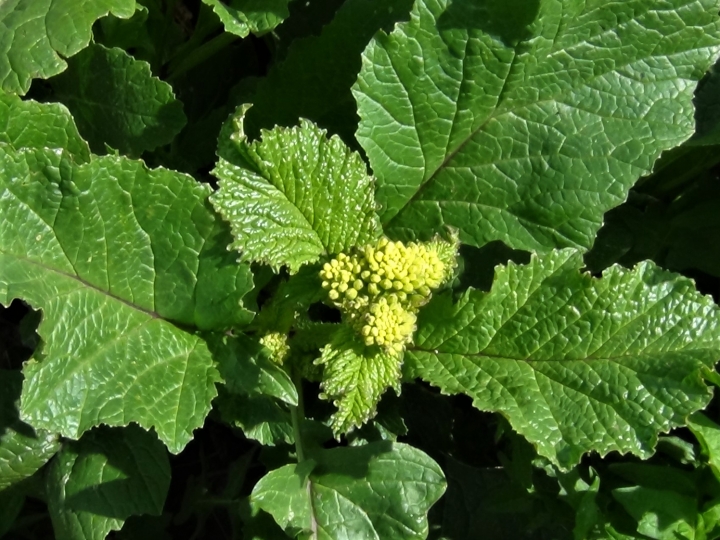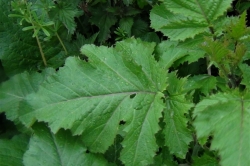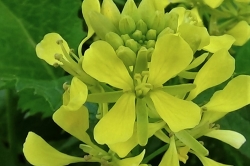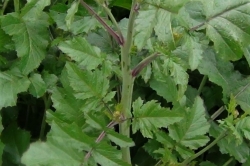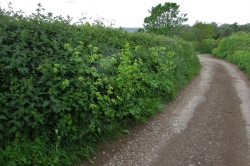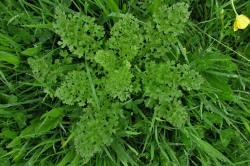A large plant can yield tens of thousands of seeds but other varieties have been chosen for use by the makers of mustard.
Home / Hedgerow Guide /
Wild Mustard
Wild Mustard
| Hedgerow Type | |
| Common Names |
Charlock, Field Mustard |
| Scientific Name |
Sinapis arvensis |
| Season Start |
Mar |
| Season End |
Aug |
Please note that each and every hedgerow item you come across may vary in appearance to these photos.
Leaves
The leaves look very different from the young to the mature plant and also look different where they are on the individual plant. The lower leaves have a stem, the upper leaves are joined directly to the main stem but all the leaves have hairs on them, are mainly lobed and have serrated edges.
Flowers
Like all the Brassicas, Charlock has cruciforme flowers (four petals in a cross) that are yellow and grow in clusters on the ends of the branching flower stems.
Stem
Tall and erect or can be very branched and lower, sometimes with purple colouring at the leaf and branch nodes.
Habitat
Field edges, roadsides, gardens, waste ground and cultivated ground usually in sunny places.
Possible Confusion
Other Brassicas, mainly mustards and rape.
Can look a little like Ragwort, pictured, but the smell of mustard should keep you safe.
Smell
When crushed the leaves smell strongly of mustard.
Taste
Sweet mustard.
Frequency
Occasional.
Collecting
The younger leaves can be added to salads, the older leaves cooked as a green.
The flowers can be added to salads.
The seeds when dried and ground can be mixed with water or vinegar to make a good mustard or sprouted for a healthy salad..
Medicinal Uses
Mustard is good for stimulating the appetite.
Said to be good for the treatment of melancholy or depression.



 (23 votes, average: 3.57 out of 5)
(23 votes, average: 3.57 out of 5)